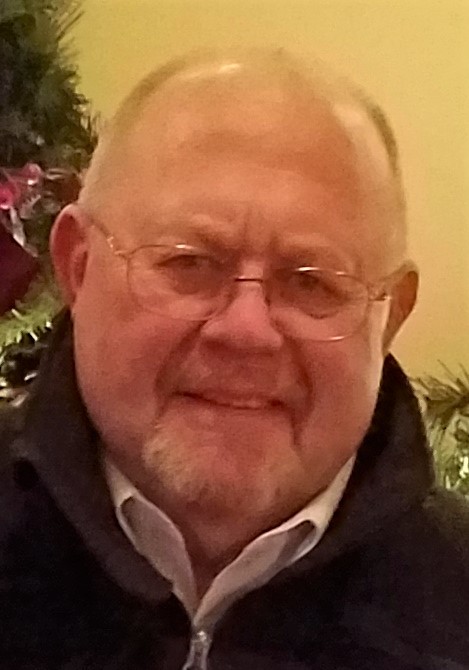The deliberative portion of juvenile court proceedings focuses intently upon the “actor,” or minor respondent, once the facts of the “act” have been adjudicated by an affirmative plea or after a trial where a finding of delinquency has been entered. Juvenile court judges then weigh the facts of the act on the same scale that considers all the aggravating and mitigating life circumstances present in the “actor’s” life before determining the most appropriate disposition (sentence).
 In most cases, the court enters a dispositional sentence of probation, which will include a list of specially selected conditions or requirements that must be fulfilled by the minor during the term of the order.
In most cases, the court enters a dispositional sentence of probation, which will include a list of specially selected conditions or requirements that must be fulfilled by the minor during the term of the order.
In its purest and simplest form, probation has been defined as the grant of liberty based upon the good-faith promise of reform. Under an order of probation, adjudicated delinquents are given the opportunity to remain free in their homes and communities conditioned upon their promise to reform their cited behavior.
The written probation order requiring the respondent to abide by all laws, as well as fulfill a laundry list of do’s and don’ts, is presented to him or her in open court. Orders of restitution, school attendance, community service, stay-away orders, counseling, drug testing, warrantless searches, electronic monitoring and curfew are only a few of the conditions that are customarily added when the circumstances of the case warrant their inclusion.
How to understand probation’s terms
However, in its more practical form, given all the conditions imposed, probation should be defined as the grant of restricted liberty based upon the hope of reform. But, even still, how does a youthful offender come to understand the obligations associated with this quid pro quo? How does he or she come to understand and follow the court’s prescription?
The court’s orders of probation are conveyed and enforced by a probation officer. They are assigned to facilitate and monitor compliance in each matter and report the minor’s progress regularly to the court. Probation officers’ initial responsibility is to ensure that each probationer understands all the conditions of the probation order and his or her responsibilities to comply.
Even when probation officers would take the time to sit down and go over every element of the probation order, tiny line by tiny line, those standard methods of helping offenders fulfill their promise of reform are seldom sufficient. Simply handing a youth a piece of paper with written instructions does not automatically guarantee that the youth understood its content.
Probationers cannot realistically be expected to fulfill the promise of reform outlined in the probation order if they can’t or don’t understand the expectations of compliance or the possible consequences for failure. Realizing that promoting a better understanding would foster greater compliance, several enlightened probation departments instituted programs and practices designed to improve probationers’ understanding of the purpose and goal of probation, and thereby reduced technical violations and increased successful completions of probation.
Cook County’s program
When the Intensive Probation Supervision Program (IPS), established for high-risk repeat juvenile offenders operating in Cook County, Illinois in the mid-’90s, saw an increase in violations of probation petitions being filed for simple technical reasons (no new criminal charge but failed school attendance, curfew violation, failed drug test, etc.), it took steps to reduce violations by increasing the probationers’ understanding of their probation orders.
IPS officers designed a Probation Enhancement Program (PEP), a mandatory Saturday morning breakfast meeting for probationers and parents held quarterly. It began instead of filing violation of probation petitions. Its program agenda focused on the components of the probation orders, including the compliance responsibilities associated with each special condition.
Speakers included successful IPS graduates offering peer-to-peer perspectives on the best way to follow the rules, the IPS monitoring judge offering her off-the-bench advice, a parent offering testimony in support of probation and a community agency director offering collateral support services to families.
Following the speakers’ presentations, the IPS youth would take a written exam on probation rules while the parents would meet in the context of a support group to explore and discuss ways they could help their youth achieve probation goals. When the groups rejoined each other, the youth exchanged their exams and an IPS officer would announce the correct answers to the audience. The corrected exams would be redistributed and sent home with each youth. The program concluded with each IPS team meeting with their individual probationers and leading them in performing various community service assignments in and around the Juvenile Court complex.
Youth council formed
Through the PEP, the IPS probationers better understood their obligations under the court’s order, violations of probation petitions dropped dramatically and successful completions of probation increased significantly.
Continuing the effort to help probation officers reinforce their clients’ understanding of the requirements and purpose of probation, as well as the need to keep the officers apprised of the effectiveness of their interactions with their probationers, the Cook County Juvenile Probation Department established a Juvenile Advisory Council (JAC) in 2002. Its charter group included six young men and women who were former or current wards and were joined by 20 probation staff committed to formal collaboration designed to improve service delivery.
The department opened itself up to client-based perspectives. JAC youth representatives were paid a modest stipend for attending meetings. Following increased youth membership and the formation of various subcommittees, JAC findings and recommendations were regularly offered to the department administrators for consideration and then distributed among managers for further discussion.
Better ways to relate and communicate with court wards were developed and adopted by professional staff following JAC input. The successes achieved by the Cook County Juvenile Advisory Council model have been heralded at national detention reform conferences sponsored by the Annie E. Casey Foundation.
San Francisco’s program
When I assumed the role as chief probation officer in San Francisco in 2005, I unpacked the Cook County JAC model and offered it for SF staff for replication. The concept was quickly embraced, and work began immediately to recruit a group of SFJAC candidates who would be assigned the task of creating and delivering a Probation Orientation Program to youth who were recently placed on probation and existing probationers who were facing technical violation of probation charges. Its program design was consistent with the department’s detention reform agenda.
The department’s Juvenile Detention Alternatives Initiative (JDAI) program coordinator assumed the primary responsibilities as the SFJAC moderator. Upon completion of their training, SFJAC members received certificates identifying them as members of the San Francisco Juvenile Probation Department’s Juvenile Advisory Council. Grant funds from the Annie E. Casey Foundation provided stipends for the SFJAC members to attend training, orientation program development meetings and biweekly Saturday morning program delivery sessions.
The SFJAC Probation Orientation Program’s impact upon probationers had profound results. It reduced the number of violation of probation hearings by 70 percent.
While I’ve witnessed many successes created through interactive and supportive probation officer-client relationships, my first-hand experience with the Cook County and San Francisco JAC programs have thoroughly convinced me that the peer-to-peer advice given to probationers, and the youth-guided counsel given to department leaders is a most valuable resource that probation departments must rely on for help.
Increasing probationers’ understanding of the probation conditions through peer-informed messaging elevates the number of successful terminations of probation and expands the number of youth who could successfully report to the sentencing court that they did in fact take full advantage of the “liberty” they were granted and fulfilled their promises of reform.
Bill Siffermann is a retired chief juvenile probation officer from San Francisco. His career as a juvenile probation officer began in 1970 in Cook County (Chicago), where he spent 34 years in progressively responsible positions overseeing delinquency caseloads, preadjudicatory diversion, intensive supervision programs and, as deputy director, co-led Cook County’s Juvenile Detention Alternative Initiative (JDAI), which was later selected as one of the Annie E. Casey Foundation’s National Model Sites. In 2005 he was selected as San Francisco’s chief juvenile probation officer, where he continued to advance the principles of detention reform. Retiring in 2013, his work in juvenile justice continues as a consultant.
